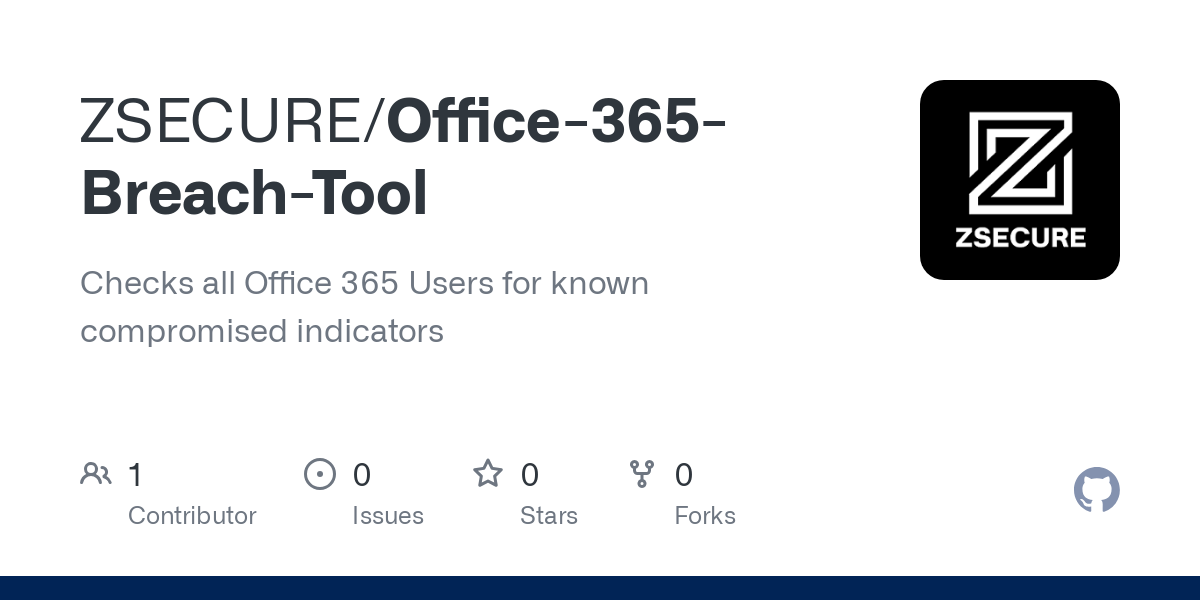Cybercriminal Made Millions Targeting Executive Office365 Inboxes

Table of Contents
The Modus Operandi: How the Cybercriminal Targeted Executive Office365 Accounts
This cybercriminal employed a range of sophisticated techniques to compromise executive Office365 accounts, demonstrating the evolving nature of cybercrime and the need for proactive security measures. Their methods relied heavily on social engineering and exploiting vulnerabilities in Office365 security settings.
- Spear phishing campaigns tailored to specific executives: The attacker researched their targets, crafting personalized emails that mimicked legitimate communications. These emails often contained urgent requests or sensitive information to increase the likelihood of a response.
- Highly sophisticated email spoofing techniques: The cybercriminal employed advanced techniques to make their emails appear to originate from trusted sources, such as internal colleagues, clients, or even the CEO themselves. This made it difficult for recipients to distinguish legitimate emails from malicious ones.
- Exploiting vulnerabilities in Office365 security settings: The attacker likely exploited weaknesses in multi-factor authentication (MFA) implementation, weak passwords, or outdated software to gain unauthorized access. They might have also leveraged vulnerabilities in third-party apps connected to Office365.
- Use of malware to gain access and control of accounts: Once initial access was gained, malware might have been deployed to further compromise the system, providing persistent access and control of the compromised accounts. This malware could have enabled the attacker to monitor emails, steal credentials, and execute further malicious actions.
- Deployment of ransomware to extort further payments: In some cases, ransomware might have been deployed to encrypt data, demanding payment for its release. This added another layer of financial pressure on victims.
The technical sophistication of these attacks highlights the inadequacy of basic security measures. Organizations need to adopt a multi-layered approach to protect themselves.
The Financial Impact: Millions Lost Through Office365 Executive Compromise
The financial consequences of these Office365 executive email compromises were devastating. The cybercriminal's success resulted in millions of dollars in losses for multiple victims.
- Examples of large wire transfers initiated through compromised accounts: The attacker used compromised accounts to initiate fraudulent wire transfers, often targeting large sums of money destined for vendors or business partners.
- Costs associated with damage control and legal fees: Victims incurred significant expenses in addressing the aftermath, including engaging forensic investigators, legal counsel, and public relations firms to manage reputational damage.
- Potential impact on company reputation and shareholder value: Data breaches and financial losses can severely damage a company's reputation, impacting investor confidence and shareholder value.
- Difficulty in recovering stolen funds: Once funds are transferred through fraudulent channels, recovering them is often extremely difficult and costly, if not impossible.
These examples demonstrate the significant financial risks associated with executive email compromise. The long-term consequences extend far beyond the initial financial loss.
Lessons Learned: Strengthening Office365 Security to Prevent Executive Email Compromise
Preventing executive email compromise requires a proactive and multi-layered approach to Office365 security. The following steps are crucial:
- Implementing and enforcing multi-factor authentication (MFA): MFA adds an extra layer of security, requiring users to provide multiple forms of authentication before accessing their accounts. This significantly reduces the risk of unauthorized access even if credentials are compromised.
- Regular security awareness training for employees, especially executives: Educating employees about phishing scams, social engineering tactics, and safe email practices is essential. Regular training should simulate real-world scenarios to enhance employee vigilance.
- Utilizing advanced email security solutions, such as email authentication protocols (SPF, DKIM, DMARC): These protocols help verify the authenticity of emails, reducing the risk of spoofing attacks. Implementing robust email filtering and anti-spam solutions is equally critical.
- Regularly updating and patching Office365 applications and systems: Keeping software up-to-date is crucial to patching security vulnerabilities that attackers could exploit. This should be a prioritized task with regular scheduled updates and prompt deployment of security patches.
- Developing a robust incident response plan for handling security breaches: Having a detailed incident response plan ensures a coordinated and effective response in case of a security breach, minimizing the impact and facilitating timely recovery.
The Role of Threat Intelligence in Protecting Against Future Attacks
Threat intelligence plays a vital role in proactive security. By monitoring the cybersecurity threat landscape, organizations can identify emerging threats and vulnerabilities, enabling them to take preventative measures before they become major incidents. Leveraging predictive analytics and threat intelligence platforms can help organizations anticipate and mitigate future attacks, enhancing their overall security posture.
Conclusion
The case study of the cybercriminal who made millions targeting executive Office365 inboxes serves as a stark warning. The sophistication of these attacks, coupled with the significant financial and reputational damage they cause, underscores the urgent need for robust Office365 security measures. Implementing multi-factor authentication, investing in advanced email security solutions, providing regular security awareness training, and developing a robust incident response plan are crucial steps in protecting against these devastating attacks. Don't become the next victim of an Office365 executive email compromise. Strengthen your security today! Learn more about best practices for securing your Office365 environment by [linking to relevant resources here].

Featured Posts
-
 Almntkhb Alamryky Thlathy Jdyd Tht Qyadt Almdrb Bwtshytynw
May 22, 2025
Almntkhb Alamryky Thlathy Jdyd Tht Qyadt Almdrb Bwtshytynw
May 22, 2025 -
 Ket Noi Giao Thong Tp Hcm Ba Ria Vung Tau Nhung Tuyen Duong Chinh
May 22, 2025
Ket Noi Giao Thong Tp Hcm Ba Ria Vung Tau Nhung Tuyen Duong Chinh
May 22, 2025 -
 Office 365 Breach Millions Made From Executive Inbox Hacks Fbi Says
May 22, 2025
Office 365 Breach Millions Made From Executive Inbox Hacks Fbi Says
May 22, 2025 -
 Kartels Security Measures Police Source Highlights Safety Reasons Trinidad And Tobago Newsday
May 22, 2025
Kartels Security Measures Police Source Highlights Safety Reasons Trinidad And Tobago Newsday
May 22, 2025 -
 Fortnites Return To Us I Phones What You Need To Know
May 22, 2025
Fortnites Return To Us I Phones What You Need To Know
May 22, 2025
